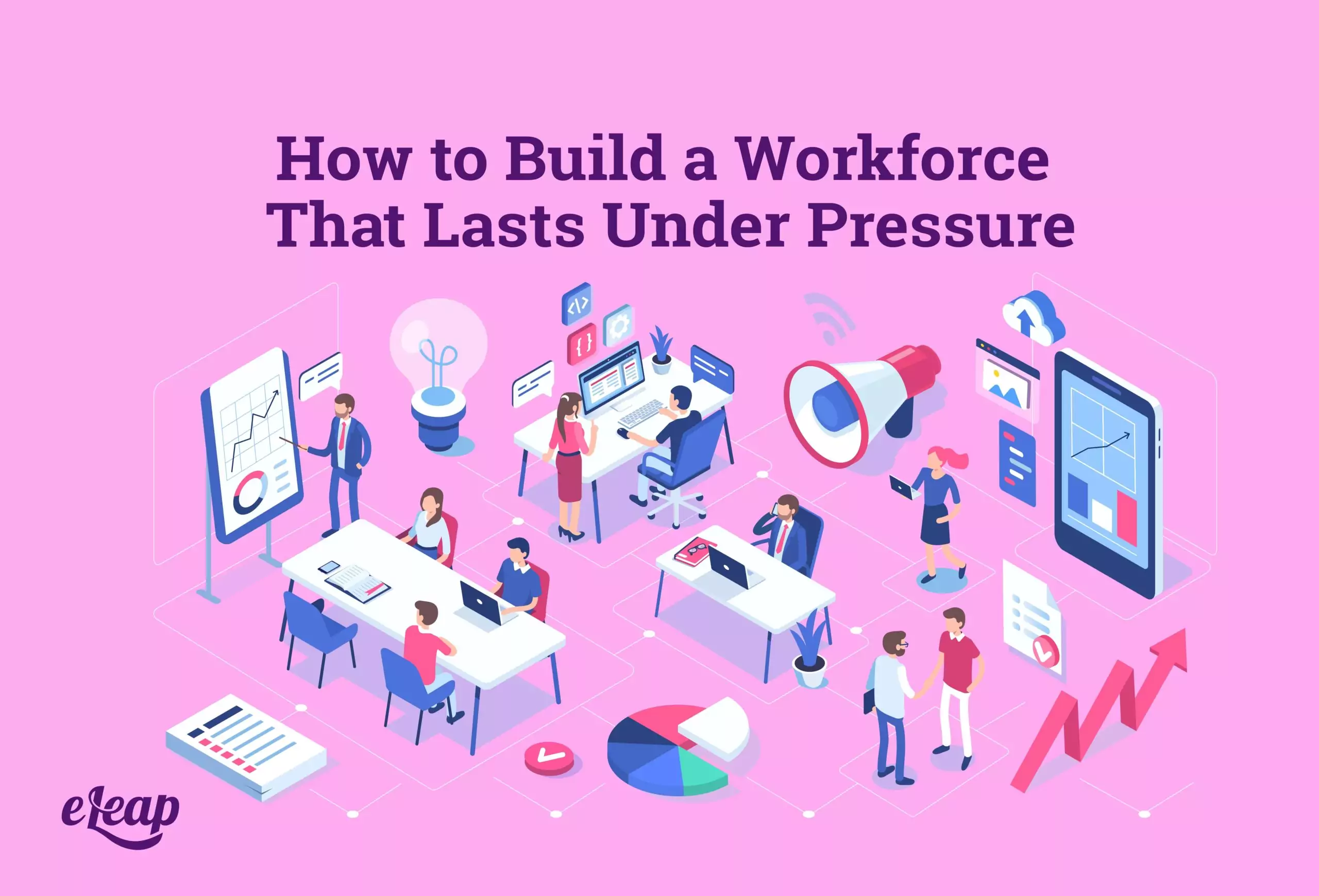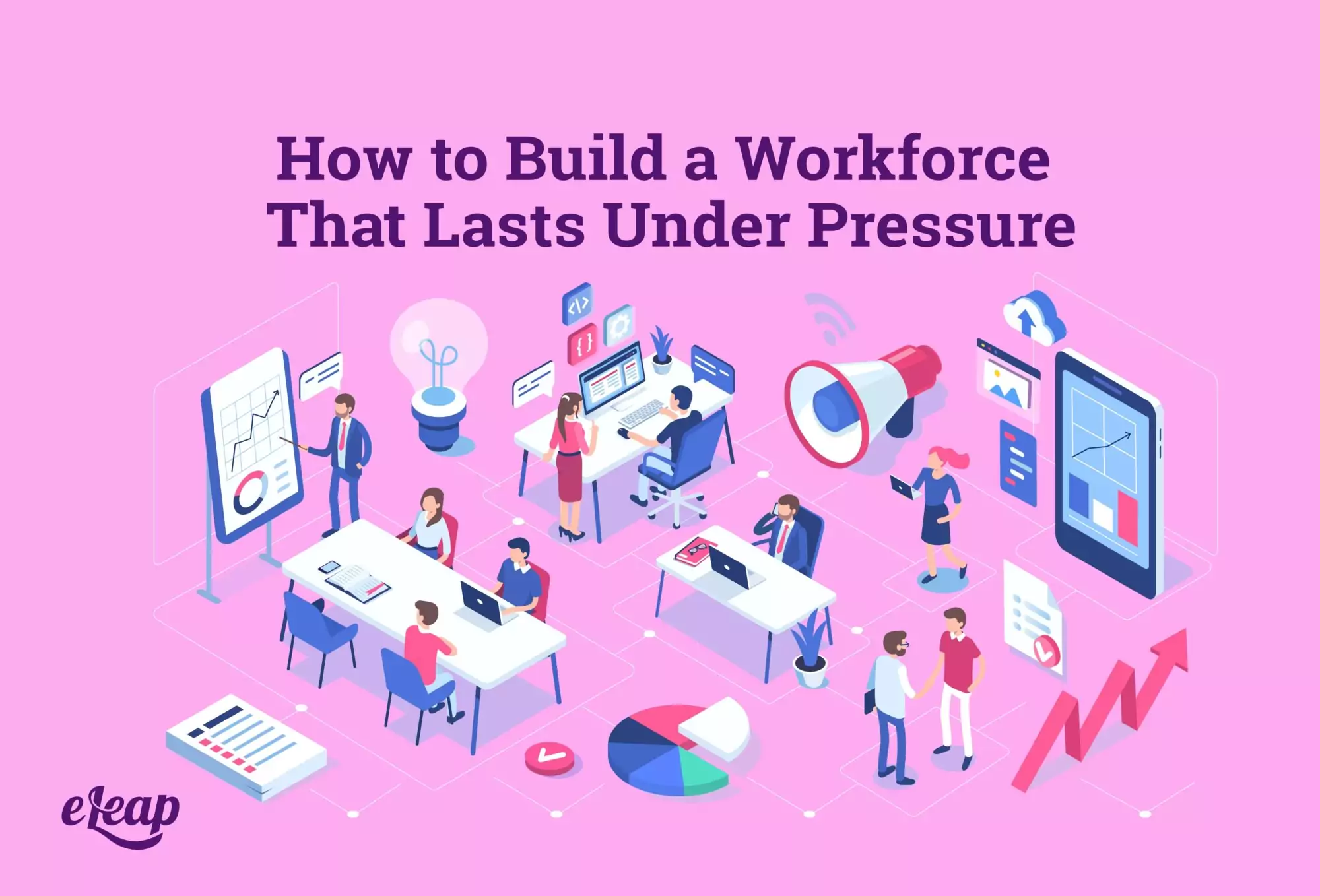How to Build a Workforce That Lasts Under Pressure

Recently, employees’ lives have been characterized by a lot of uncertainty. It’s understandable why so many employees might feel stressed following the pandemic. Concerns about the economy, money, jobs, the housing market, among other things, continue to put employees under a huge amount of stress.

Employees can have trouble thriving in the workplace when their lives are subjected to stressful changes they can’t control. If your employees are not flourishing, your organization will suffer. Even though the pandemic was such a stressful time, there were valuable lessons to be learned. Although the initial fear and concerns are beginning to wear off, employees are still feeling the pressure of this new paradigm. Not only did the Covid-19 outbreak shake workers’ confidence, but it clearly displayed the ways in which unprecedented systemic changes can strike at any time. This underlies the need for a workforce that can perform under pressure. Despite numerous unforeseen events, resilient workers and team members are ones who persevere and emerge largely unscathed from scary times or bad experiences.
During stressful times, how can you help your employees maintain a healthy work environment? In order to ensure that you have resilient workers, you need to invest in them. A resilient workforce bounces back quickly after a setback and strives to succeed despite challenges. Under stress and in the face of change, a workforce that lacks resilience is much more likely to buckle. It’s not good news for your organization if your whole team is brought to its knees following an unprecedented event.
Understanding some of the biggest causes of employee burnout will help you build a resilient workforce. Learning to empathize with others’ problems should be a prerequisite for coaching resilience to your team. If you want to know how things are going, make sure to check in with employees or use engagement surveys. To help you understand, we’ve compiled a list of common problems employees face.
Burnout
There are many reasons why employees burn out. This is an issue to be aware of especially if your organization has a large number of remote workers. It can be challenging to keep a healthy work life balance when working from home, resulting in burnout. Due to economic demands, the motivation to work might not be made out of choice or to better oneself, but rather out of the fear of job loss. Unfortunately, the majority of employees will become burnt out very quickly if their working hours take over their weekends and evenings. In this hiring landscape you really don’t want your team members to burn out.
Feeling Uncertain
Stress is also likely to plague employees who have no idea how the future of the company looks. Employees who don’t know what to expect from their company in the future will naturally be worried. Additionally, workers will be nervous a lot of the time if you still have remote workers who don’t know when they’ll return to the office or if they’re not sure if their job is secure or if your company will survive. If times are hard, letting your employees feel uncertain will only make things more difficult.
Not Enough Support
Another common problem among employees is a lack of support, particularly emotional support. Your workforce is likely to have suffered from a tough year, with the past year being extremely difficult for everyone. An employee who feels frustrated or concerned probably won’t be able to put their best foot forward.
Teaching Resilience
It’s a good thing that you can coach your employees to become resilient once you know what might bother them. Although some people are naturally more resilient than others, it is not just a personality trait. Educating entire workforces about resilience is absolutely necessary. Several ways are available for teaching resilience, but one of the easiest is to break down its components and work on them individually. To help your employees become more resilient, you can put in place steps to implement the following characteristics in your workforce.

Trust
It is imperative that your employees become more vulnerable with each other in order to build trust. Creating a collaborative and engaging work environment and encouraging employees to communicate openly is essential for building trust in the workplace. The best place to start is with team-building exercises. To achieve a common goal, employees should be vulnerable and collaborative. When times are tough, employees need to trust one another and their organization and know they have something to rely on.
A Sense of Belonging
Your employees will feel like they belong if you connect their daily tasks with the company’s purpose and the bigger picture. People are more likely to be persistent and drive harder to achieve goals when they feel like they belong in their environment and their work means something.
Growth
Employees who are resilient tend to have a mindset that is largely growth-oriented. It is often based on their love for learning and an understanding that they can develop their skills to overcome challenges. It’s also much more likely that employees will quit when things get tough if they don’t feel like they can grow. In order to be able to see challenges as learning curves rather than a threat, employees must have a growth mindset.
A Positive Mindset
In order to build resilience, positivity and optimism in the workplace are crucial. Negative situations are viewed as something that can be fixed and have some sort of resolve by resilient individuals. The importance of motivation and feedback in generating an optimistic workforce cannot be overstated. There needs to be the sense that, even if they fail, they can learn something and continue on the right path. Negative teams are company killers, and positive teams tend to be less resilient to change.
You can help your employees become more resilient by understanding the components that make up a resilient workforce. Before a group can be resilient, each member needs to be resilient individually. In the long run, you’ll benefit from resilience since employees will be able to overcome any obstacles in the future.